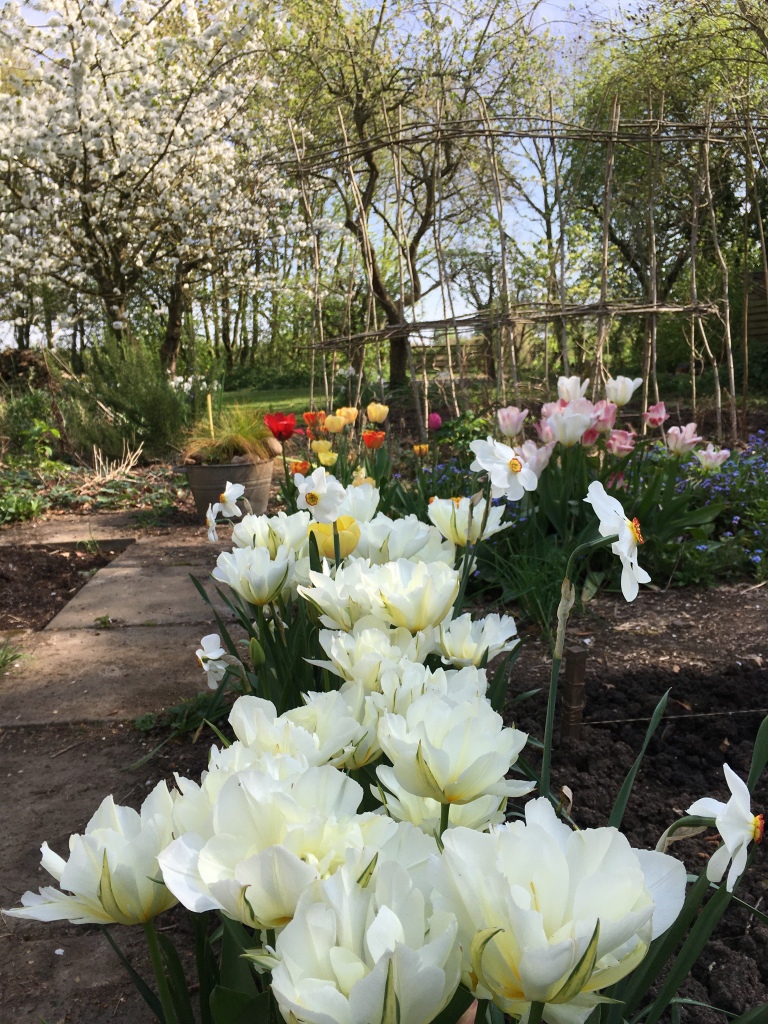
I’ve spent the day clearing out my 20ft second-hand Alton Cedar greenhouse. This was purchased for £260, the best £260 I’ve ever spent. Admittedly, it was 32 years ago- but the greenhouse is still almost as good as new. I’ve painted it black, although it was a harsh bright red when it arrived. The staging is also painted black which really sets off the pelargoniums housed there. Plants live in pots along the front path in front of the greenhouse during the summer. It just gets too hot indoors, and they appreciate some fresh air and rainwater. But at this time of the year, I sweep it out, wash down the windows and give it all a quick re-paint. Everything must be back inside before the first frosts.
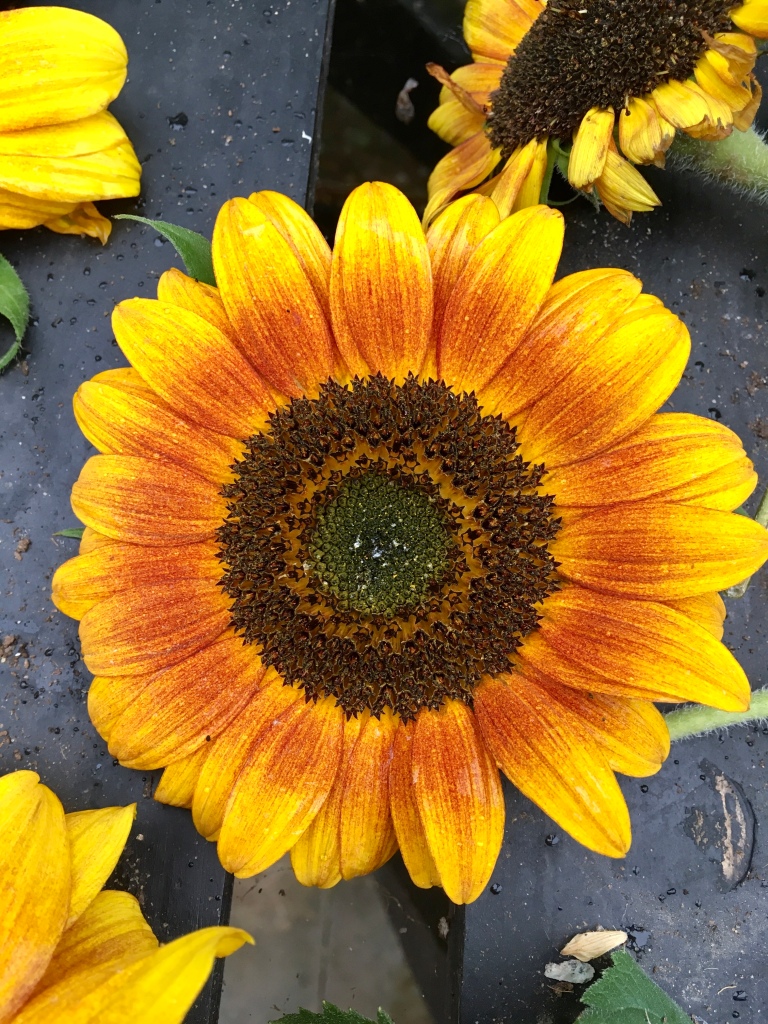
In the background you can see my 10ft sunflowers that I thought were small multi-headed types for cutting. I’d need a ladder to harvest those! Instead I’m leaving most of them to dry out for bird seed. A few blew down in the recent storms, so I’ve put them in jam jars on the kitchen table. I’ve made a note to carefully check the seed packets next summer so I don’t make the same mistake twice! They are beautiful though, and the bees and butterflies enjoying the pollen are currently a wonderful sight.

Next to the greenhouse there’s a matching 20ft polytunnel where I grow fruit, vegetables and flowers. Tomatoes and peaches have done really well this summer. You’ll also see a little pile of cobnuts in the basket. Alongside the greenhouse there’s a huge hazel tree which squirrels usually strip overnight. This year there were more nuts than they could manage, so I’ve harvested some to make into cakes and biscuits.

Peaches have been a great success this summer. My trees are grown in large 15” containers in the poly tunnel. This protects them from peach leaf curl which thrives in wet conditions. Keeping leaves dry is the best way to combat the disease.
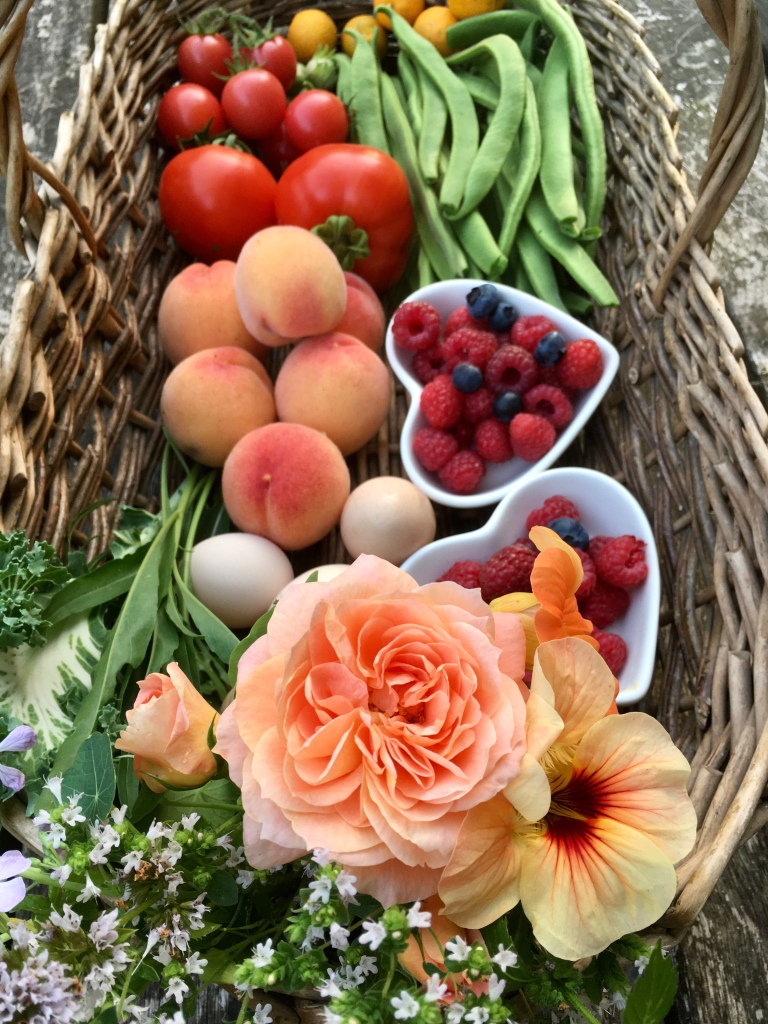
Baskets nearly always contain flowers as well as fruit and veg. This is Rose of the Year 2022, ‘It’s a Wonderful Life.’ Highly recommended for fabulous scent, repeat flowering and disease resistance. I’ve also picked some seedling nasturtiums. I’m particularly fond of this peachy-coloured one and keep it going by taking cuttings which root in water. I collect seeds too, but it might not come back exactly the same colour as nasturtiums readily hybridise. There’s also a few herbs, mint, marjoram and rosemary which add a lovely scent to any jam jar flower arrangement. The climbing beans are pink-flowered Celebration which don’t go stringy and crop late into the season.
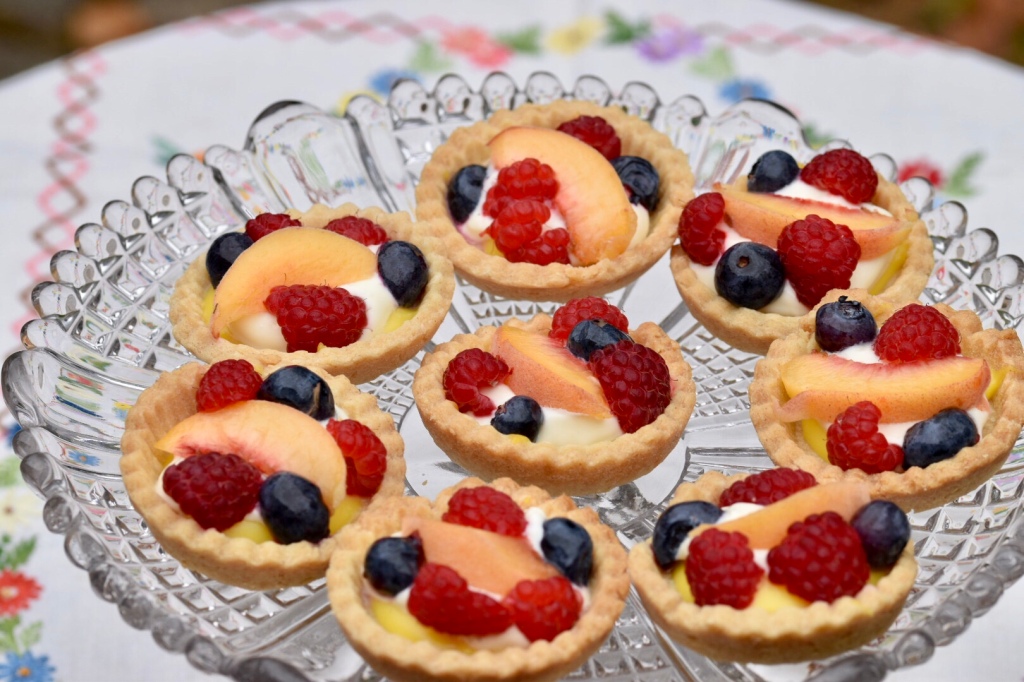
Still on the theme of peaches, these are the little pastry custard tarts I made with slices of fresh peach, autumn raspberries and home-grown blueberries. The recipe is for my column in Garden News Magazine which I’ll share next week. They are very quick and easy to make.

I’ve had this potted purple bougainvillea for about 30 years. I’ve trained it into a round-headed shape so that it doesn’t take up too much room. It will be the first plant to go back in the greenhouse as it’s not at all hardy. Bracts stay colourful until December and I often use it in my Christmas table arrangements.
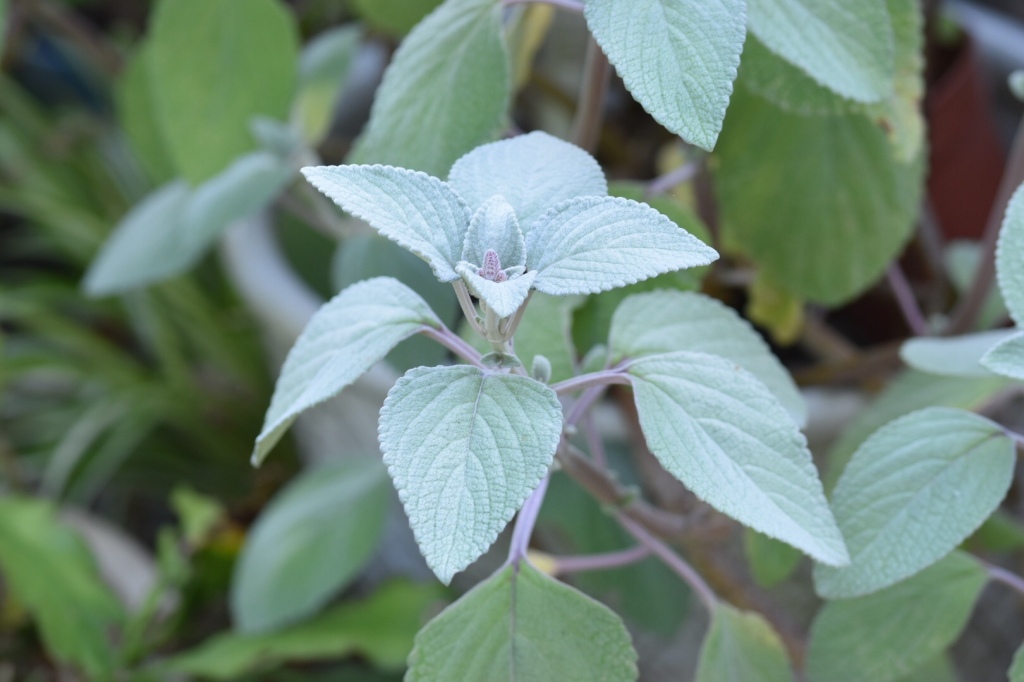
In pots alongside the bougainvillea are these beautiful grey-leaved tender perennial plants. They have long sprays of pale blue flowers. I’ve temporarily forgotten the name! Each winter I take insurance policy cuttings just incase I lose the parent plants.

There’s a border full of low-maintenance day lilies in front of the greenhouse. In autumn when the day lilies are starting to die back, these beautiful spires of persicaria appear. This one is Persicaria Rosea.


There’s also a white persicaria. Sadly, the label has been lost so I’m not sure of the variety. It thrives in dappled shade and flowers from August to November. The photo is out of focus as it was such a windy day, but it’s a very pretty flower nonetheless.
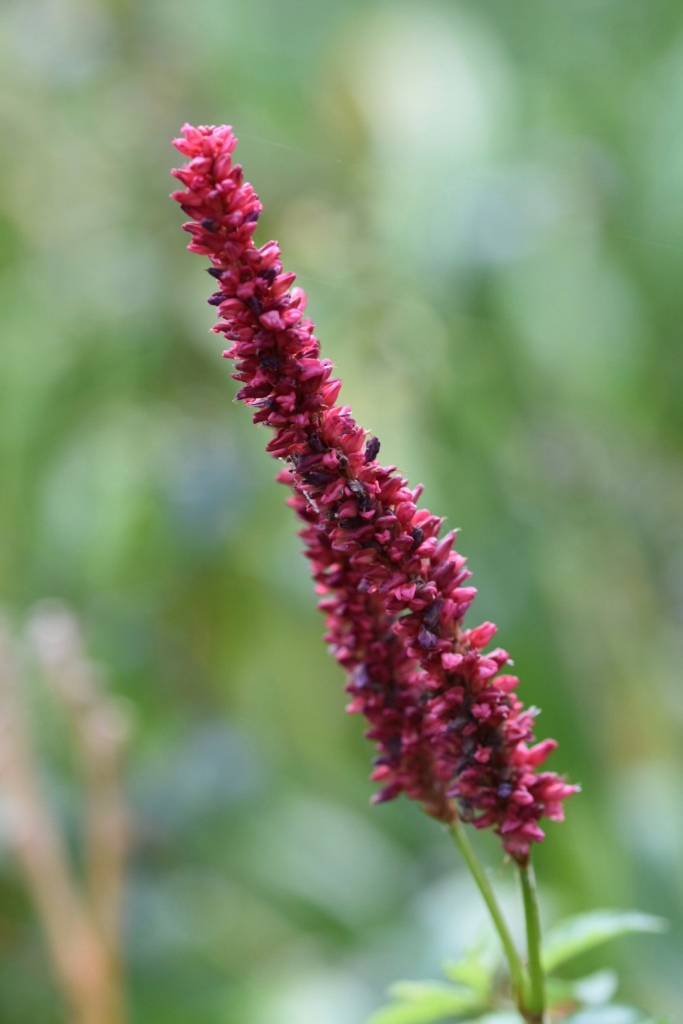
And finally, this one is also growing in with the daylilies. This persicaria is either Firetail or Firedance. They are good for cut flowers, lasting at least a week to 10 days in a vase if you change the water each day. The spire shape gives a nice contrast to round, daisy flowers.
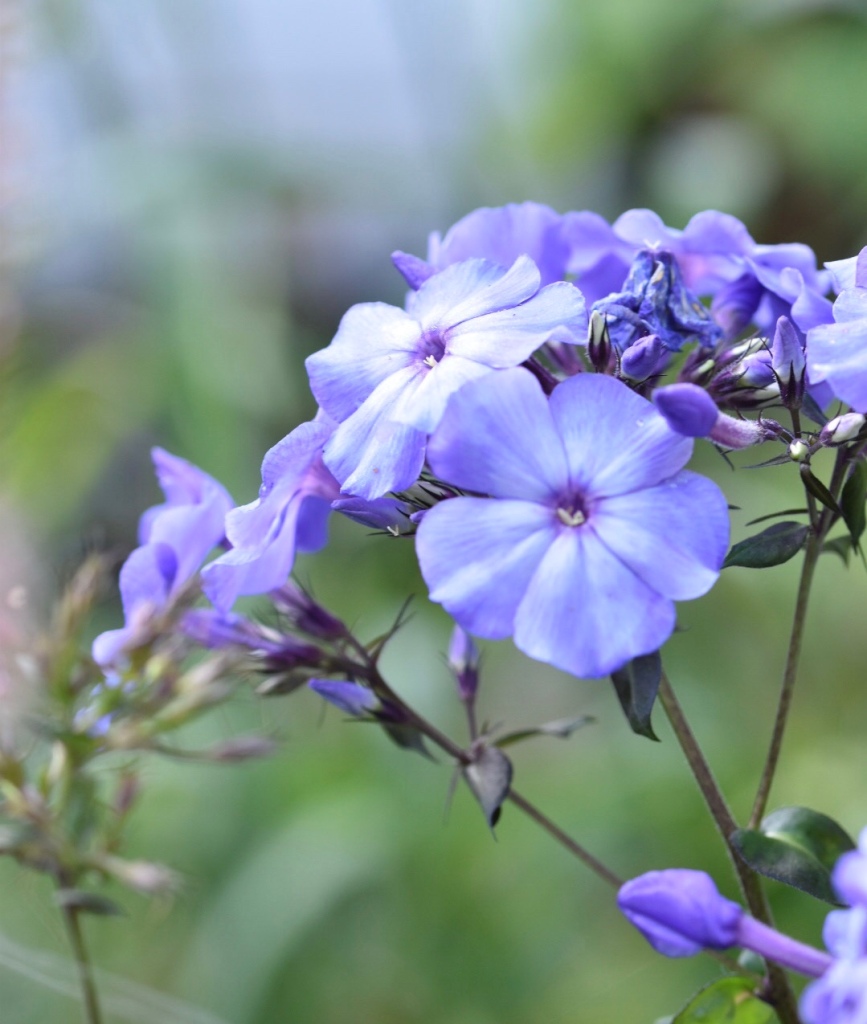
In amongst them are several types of phlox. This one is Blue Paradise- very highly scented and long-flowering in late summer.

The back field behind the summerhouse had oats growing there this summer. It’s been wonderful to sit in the shade and watch the field slowly turning to a shimmering gold. On a windy day, the crop ripples like waves and before it ripens the green-grey colour reminds me of the ocean. Instead of seagulls we have barn owls silently gliding by at dusk. There’s no sound at all from the beating wings and they quarter the field without knowing we are watching from the little wooden house.

We are always pleased and much relieved when the farmer manages to get the crop in before bad weather arrives. They work through sunset and into the night if rain is threatened. We lie in bed and listen to the tractors going up and down the fields and along the lane. At 2am there’s suddenly silence again and we know they have successfully got in the crops. Rain falls the next day and it’s wet for a week.

This is the view from our five bar gate at the top of the paddock. For a few weeks after the harvest, the fields retain their golden glow, and I drink in the scene and hold on to the memory as autumn and then winter darkness descends.

When we moved here, it was just a decrepit house and no garden. The farmer who built the house sold us an acre of land alongside it, and we planted 250 sapling trees given to us by the woodland trust and local council. At the time, there was a scheme giving free trees to anyone returning farm land to nature and we planted a small woodland area. All along the boundary, we left viewing points through to the fields beyond. The ever-changing seasons are a delight to spy through these holes in the treescape.
Thank you for reading my blog. Please sign up for e mail updates and I would love you to press ‘follow’. I often join in with Cathy for her ‘In a Vase on Monday’ meme. Mostly I write about what flowers I’m growing to give to my friends and family, and what produce I’m growing for family meals. I don’t grow in traditional rows, everything is mingled together and much is grown in window boxes and containers, with many different varieties ripening early, mid-season and late. There’s nearly always something to ‘forage’ from the plot.




